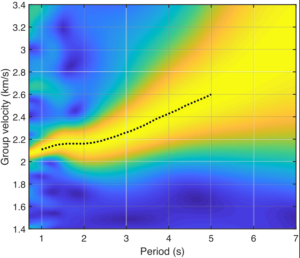To mitigate climate change, our society must reduce its carbon footprint coming from fossil fuel energies and favor green energy solutions instead. Geothermal energy is a resource this available in abundance. However, the development of this sector is hindered by the insufficient subsurface information, resulting in high exploration risks. To overcome these obstacles and enrich the existing knowledge of the subsurface information, MIGRATE will develop machine learning methods to build new, innovative, and affordable exploration methods to find geothermal sources with lower drilling costs than previous methods. The MIGRATE project is a collaboration of our group with the Crustal Deformation and Fluid Flow research group of the University of Geneva led by Matteo Lupi, and the team of Domenico Montanari from the CNR research institute.

The project uses surface wave ambient noise tomography (SWANT) acquired by dense nodal networks to capture the subsurface velocity structure of the upper crust. The aim of this approach is to improve the resolution at depth while reducing acquisition logistics and costs. The project will develop new analysis methods that remove human bias, which are currently existent in SWANT, increase reproducibility and reliability, and identify potential geothermal targets. To give a concrete example: One step that needs to be performed within SWANT is picking a dispersion curve (the black dashed line in the right figure [1]) in the group-velocity dispersion diagram. Picking this curve is usually done by domain experts and thus suffers from human bias. One step towards automating SWANT via machine learning methods will be the automatization of dispersion curve picking.
The end goal is to obtain velocity maps from surface wave ambient noise data with automatized machine learning methods, which exploit uncertainty quantification and sample efficiency. If successful, this approach may have implications for the understanding of geological processes such as seismogenic domains, volcanic systems, and ore deposits, and may promote the further development of other renewable solutions such as heat storage and geological carbon storage. The developed techniques will be used to investigate the geothermal systems hosted in the Northern Apennines hinterland in Italy as a case study for this project. MIGRATE is funded through an SNSF grant, under the Synergia funding scheme.
[1] Figure 3a), Ambient-noise tomography of the Greater Geneva Basin in a geothermal exploration context, Thomas Planés, Anne Obermann, Verónica Antunes and Matteo Lupi, Geophysical Journal International (2020), 220